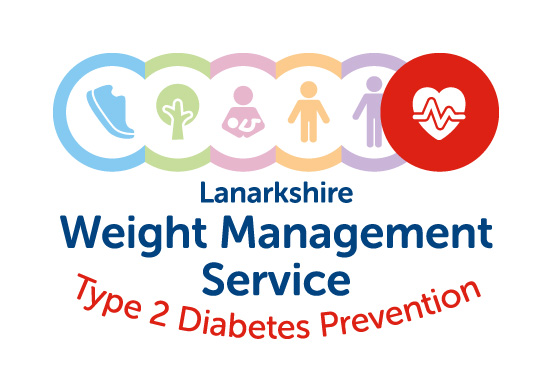Pre Diabetes

 Pre-diabetes is a condition where the blood glucose (sugar) level is higher than normal but not high enough for a diagnosis of diabetes.
Pre-diabetes is a condition where the blood glucose (sugar) level is higher than normal but not high enough for a diagnosis of diabetes.
Why is it important to know if you have Pre-diabetes?
If you are living with Pre-diabetes you have a higher risk of developing Type 2 diabetes. It is also known to be associated with a higher risk of heart attacks and strokes.
What can I do to help?
A healthy lifestyle will help reduce your risk of developing diabetes. Below provides some practical advice and suggestions to help you achieve this.
Healthy eating and weight
If you are living with a higher weight, the most important thing is to try and lose weight. Losing weight will make it easier for your body to lower your blood glucose level, and can improve your blood pressure and cholesterol. The best way to make changes is to follow a healthy diet and take regular exercise.
Where can I find out more?
What is healthy eating?
Eat regularly
Have three meals a day. For example, breakfast, lunch and evening meal. This will help keep your blood glucose levels steady and control your appetite.
Include a starchy carbohydrate food at each meal
Starchy foods include cereal, bread, pasta, rice and potatoes . Starchy foods that are also high in fibre are the best.
Table – Starchy Carbohydrates
| Eat less often | Eat more suitable alternatives |
| Sugar or honey-coated breakfast cereals, for example, Frosties, Coco Pops, sweetened muesli, sugary cereal bars | Wholegrain breakfast cereal, for example, Weetabix, unsweetened muesli, Shredded Wheat, Branflakes, Porridge |
| Fried chips, Instant mash, roast potato | New potatoes, Baked potato, Sweet potato |
| Fried Rice, Cheesy pasta dishes, | Basmati rice, pasta, chapatti |
| White Bread or rolls | Whole grain, granary, seeded bread or rolls |
Remember: Although the foods in the right hand column are the preferred options they should still be eaten in moderation – watch your portion sizes.
Less sugar
Too much sugar and foods containing sugar can cause blood glucose levels to rise. It is best to replace these with lower sugar and sugar free foods instead.
Table – Sugar
| High in Sugar Eat less often |
Foods Lower In Sugar/Sugar Free Eat more suitable alternatives |
| Sugar, glucose, glucose syrup, dextrose, sucrose, icing sugar, light spoon, half spoon, coconut sugar | Artificial sweeteners, for example, Canderel, Sweetex, Hermesetas, Splenda |
| Sweet squash and fizzy drinks, for example, Ribena, Lucozade, cola, lemonade, drinking chocolate | Diet or low calorie fizzy drinks, sugar free or no added sugar diluting juice or squash, tea or coffee with no added sugar, low calorie chocolate drinks made with water. |
| Sweets, for example, chocolate, toffee, fudge, tablet, mints, chocolate covered and cream filled biscuits, cakes, marzipan | Plain biscuit or small scone, small crumpet or pancake, fruit /malt loaf, oatcakes, crackers. |
| Sugar-coated or honey-coated breakfast cereal, for example, Frosties, Sugar Puffs | Unsweetened breakfast cereal, for example, Porridge, Weetabix, Branflakes, Allbran |
| Sweet puddings, crumble, tarts, tinned fruit in syrup | Fresh or dried fruit, diet or Light yoghurt, sugar-free jelly, tinned fruit in natural juice |
| Marmalade, jam, honey, syrups eg maple syrup, agave syrup, chocolate spreads. | Reduced sugar marmalade, jam or thin scraping of ordinary jam, marmalade or honey |
Remember: Although the foods in the right hand column are the preferred options they should still be eaten in moderation.
Less fried and fatty foods
High fat diets are linked to heart disease. Reducing your fat intake will help you lose weight.
Table – Fatty Foods
| High in Fat Eat less often |
Lower in Fat Eat more suitable alternatives |
| Butter, margarine, oil, lard, dripping, | Low fat spread and oils made from unsaturated oils such as olive oil, vegetable oil, corn oil, monounsaturated spreads |
| Fried foods | Grill, poach, boil, microwave or oven bake food |
| Chips | Potatoes – boiled, steamed or baked |
| Pies, pastries, sausage rolls, fatty meat | Lean cuts of meat, fish and chicken without the skin |
| Creamy sauces and dressings | Tomato based sauces |
| Cream, mayonnaise, salad cream, full fat yoghurt, full fat milk | Low fat natural yoghurt, diet, light or low calorie yoghurt. Low fat fromage frais, semi skimmed or skimmed milk |
| Full fat cheese | Reduced fat varieties of cheese, Lower fat cheese such as Edam, Gouda, cottage cheese, grate or slice cheese thinly |
| Crisps, savoury snacks, nuts | Low fat, unsalted crisps or savoury snacks, unsalted nuts. |
Remember: Although the foods in the right hand column are the preferred options they should still be eaten in moderation – watch your portion sizes.
Eat fruit and vegetables - Five portions a day
One adult portion is 80g of fruit or vegetables.
Examples of one portion:
- One medium fruit – e.g. an apple, banana or orange
- Two small fruits – e.g. kiwi, satsumas or plums
- Two tablespoons of vegetables
- Small bowl salad vegetables
- One medium tomato or 7 cherry tomatoes
- Berries – e.g. 7 strawberries, 4 tbsp blueberries
- Fruit juice, smoothies or vegetable juices can be included – maximum of 1 small glass (150mls) daily
All fruit and vegetables are suitable and they can be fresh, frozen, or tinned in natural juice. Try to have vegetables with your evening meal and spread your fruit throughout the day.
Include oily fish
Oily fish contains a type of fat called omega 3, which helps protect against heart disease. You should try to have oily fish in your diet at least once a week. Examples are sardines, pilchards, salmon, mackerel or herring.
Less salt
Too much salt can raise your blood pressure which can lead to stroke and heart disease.
- Avoid adding salt at the table.
- Use as little salt as possible in cooking.
- Use herbs and spices to flavour food instead.
- Avoid processed foods, tinned, packed foods, salty meats.
Healthy weight
Body weight and the risk of developing diabetes are closely linked.
If you are living with a higher weight, it is harder for your body to use insulin properly.
A healthy weight will also help to reduce your risk of heart disease and stroke and control your blood pressure.
If you are trying to lose weight a realistic aim would be (1-2lbs each week). It is better to lose a small amount of weight and keep it off, than to lose a lot of weight and regain it.
Portion sizes
As well as looking at the types of food you eat it is important to consider your portion sizes, particularly if you are trying to lose weight. You may need to change the proportions of food on your plate. As a first step you can use your plate as a guide.
If you are trying to maintain your weight
Try to divide your plate into some starchy carbohydrate foods, vegetables and lean meat, fish, beans or alternatives
If you are trying to lose weight
Eating less fatty foods will help you lose weight, therefore have a smaller amount of lean meat, fish, beans or alternatives. Try to fill half your plate with vegetables and a smaller amount of starchy carbohydrate food.
Limit alcohol intake
The recommended amounts of alcohol for people with pre-diabetes and the general population are exactly the same. The risk of developing a range of illnesses, including certain cancers, increases with any amount of alcohol you drink on a regular basis. Keeping within the guidelines can reduce health risks.
Low risk alcohol guidelines
- Men and women are advised not to regularly drink more than 14 units per week
- Spread your drinking over three days or more if you drink as much as 14 units a week
Alcohol is high in calories and may cause weight gain, therefore sensible drinking is essential.
What else can I do?
Support to quit smoking
Smoking greatly increases the chance of developing a serious health problem. If you smoke, there is free NHS support to help you quit. Find out more by visiting Quit Your Way.
Physical Activity
Increased daily activity can help you to control your weight and reduce your risk of heart disease, high blood pressure and stroke. It is also good for your mood, managing stress and getting better sleep.
It is a good idea to take up some form of regular physical activity such as walking, swimming, dancing or cycling. Even housework counts.
Consult your doctor before taking up any regular strenuous exercise, particularly if you are overweight.
Monitoring
You should have a blood test every year to measure your blood glucose level. Arrange an appointment with your GP or practice nurse to have this done.

